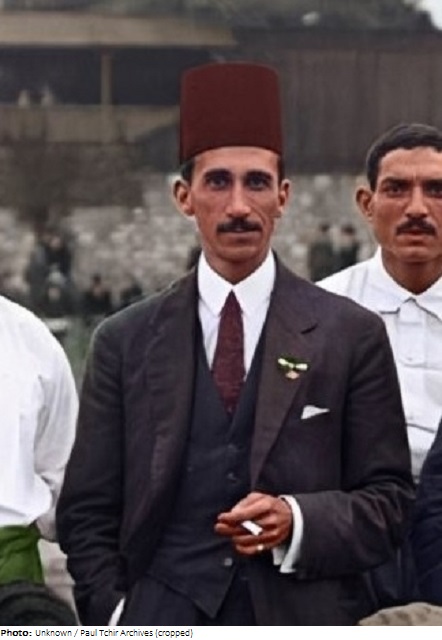Ahmed Hassanein’s father was a professor at Al-Azhar University and a confidant of many important Egyptian political figures. After graduating from Oxford University, Ahmed held several important positions under King Fuad I and taught his son, the future Farouk of Egypt, how to speak Arabic in addition to his native Turkish. During the 1920s he was a prolific international fencer and competed in two Summer Olympics: he was eliminated in the opening round of the individual foil competition and the quarter-finals of the individual épée event in 1920, but did not win a single bout in the individual épée tournament in 1924.
A man of many talents, Hassanein also undertook several scientific studies and explorations in the Libyan Desert during this period. Among the most famous of his reports was his discovery of previously unknown oases that helped pave the way for new trade routes to through the Sahara, and his findings were reported in National Geographic Magazine (complete with a detailed map) and eventually became the subject of their book “The Lost Oasis.” For his work in the region, which included a detailed cultural history of the Senussi people and thousands of photographs, he received the Gold Medal of the British Royal Geographical Society in 1924. He remained a close confidant of the King and served in the higher echelons of the court for many years until he died in a car accident on the Qasr al-Nil Bridge in February 1946.

 Egypt
Egypt EGY
EGY EGY
EGY EGY
EGY EGY
EGY